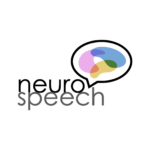About
Project
Naming-Decoder
Picture naming decoding from intraoperative electrophysiological recordings during awake brain tumor surgery
Anarthria is the inability to articulate intelligible speech. It can occur in the context of numerous brain pathologies and is an extremely debilitating symptom, as it makes verbal communication with others both difficult and limited. These two disabilities are particularly pronounced when motor paralysis of the rest of the body is also present, as is the case in patients with locked-in syndrome (LIS) or amyotrophic lateral sclerosis (ALS). These patients then rely on augmented and alternative communication (AAC) tools for their daily interactions. However, such devices require excellent eye movement control, which is not always the case.
Brain-computer interfaces (BCI) hold great promise for these patients and, more generally in the future, for all patients with severe anarthria. The objective is to directly record the neural activity emitted during the internal production of speech and decode it in order to reconstruct speech from these recordings. Due to insufficient spatial resolution, non-invasive BCI devices (e.g. EEG = electroencephalography) currently do not achieve clinical efficacy. Therefore, current research focuses on invasive devices, with electrode implants directly on the brain surface.
The most promising invasive BCIs rely on highly invasive microelectrode arrays (MEA) penetrating the cortical layers, which tend to irritate brain tissues and cause inflammation. A long-term promising alternative consists of intracranial electrode strips or grids (ECoG = electrocorticography) that rest on the brain surface without penetrating the cortex. ECoG was not a suitable solution because the contact density of these electrode grids is too low to allow precise speech decoding (1 contact/cm² versus 100 contacts/cm² for MEA). However, a new generation of ECoG offers a much higher contact density, approaching that of microelectrodes.
Patients with infiltrating brain tumors often require awake surgery during which standard low-contact ECoG electrodes (1 contact of 4mm diameter every cm) are temporarily placed on the surface of the exposed brain to measure brain connectivity, providing valuable assistance to the surgeon. During these surgeries, patients perform a picture-naming task. These operations present an exceptional opportunity to test the impact of contact density on speech decoding accuracy.
Our study aims to replace the standard low-contact electrodes during these awake surgeries with high-contact electrodes (at least 1 contact of 1mm diameter every 2mm). We hope that with this much denser sampling, it will be possible to decode speech from neural recordings. This project would thus test the potential use of these new electrodes to decode speech from brain activity, opening up new prospects in the field of brain-computer interfaces.


